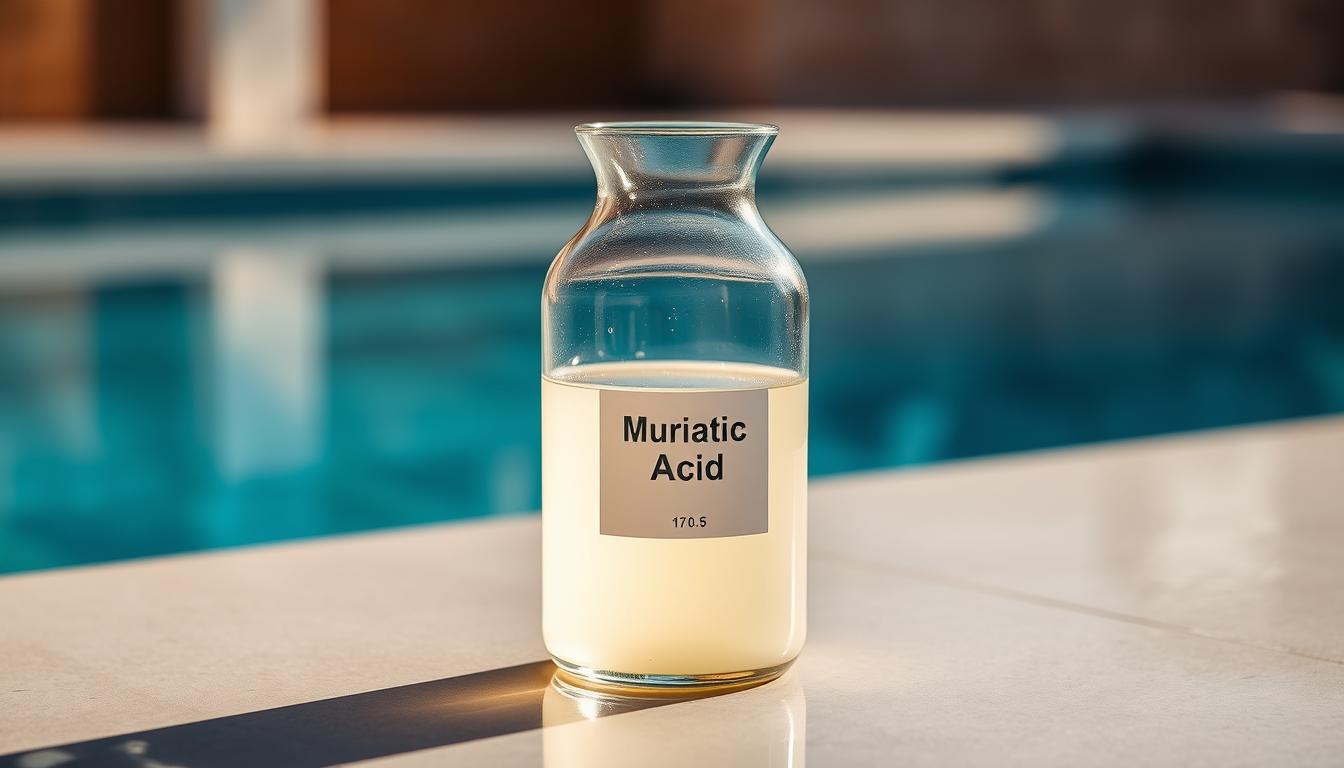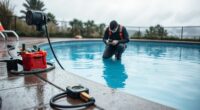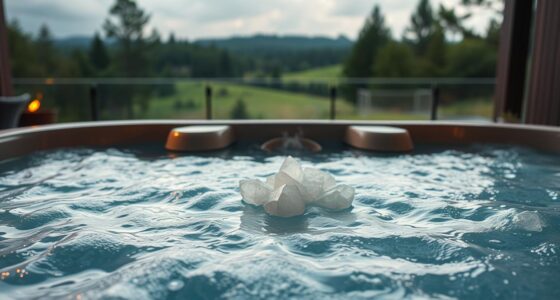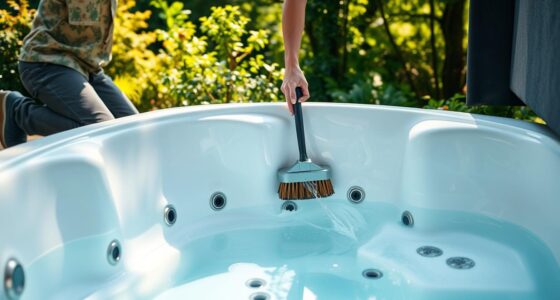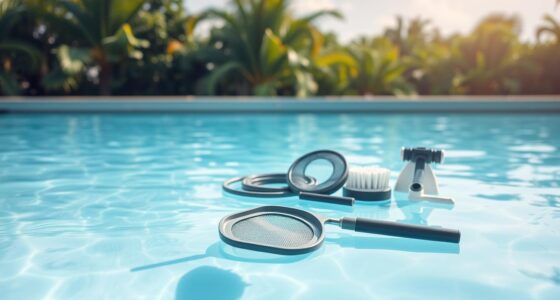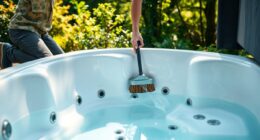Did you know that nearly 70% of swimming pool owners neglect the importance of maintaining proper alkalinity levels, which can lead to a host of issues? Keeping your pool water balanced is crucial not just for clear water but also for safe swimming. Muriatic acid plays a significant role in achieving optimal pool alkalinity and ensuring your backyard oasis remains inviting and healthy. In this article, we will explore the essential relationship between muriatic acid and pool maintenance, guiding you through necessary adjustments and safety precautions to keep your pool in top shape.
Key Takeaways
- Muriatic acid is essential in managing pool alkalinity.
- Proper alkalinity levels are vital for clear and safe swimming water.
- Balancing pool water prevents equipment damage and skin irritation.
- Regular testing of pool alkalinity helps in proactive maintenance.
- Safety precautions are important when handling muriatic acid.
Understanding Pool Alkalinity
Total alkalinity is a key factor in maintaining your pool’s overall health. This measurement indicates the concentration of alkaline substances in the water, which plays a crucial role in pool chemistry. Maintaining the right levels of total alkalinity helps with buffering, ensuring that your pool’s pH remains stable.
The ideal range for total alkalinity in most pools is between 80 and 120 ppm (parts per million). When alkalinity is too low, you may encounter pH fluctuations. These fluctuations can cause a host of problems, such as skin irritation for swimmers, cloudy water, and even damage to pool surfaces and equipment.
Understanding the fundamentals of total alkalinity aids you in managing your pool’s chemical balance effectively. Proper buffering helps to maintain pH stability, making it easier to keep your pool water safe and inviting for swimming.

What is Muriatic Acid?
Muriatic acid is a widely used pool chemical, recognized for its effectiveness in managing water chemistry. Often referred to as hydrochloric acid, this powerful pH reducer plays a critical role in balancing pool conditions. By lowering both pH and total alkalinity levels, it helps maintain a stable swimming environment.
Handling muriatic acid requires caution due to its corrosive nature. You should always wear protective gear when working with this pool chemical. Proper dilution is important when adding it to your pool water, as it ensures safety and effectiveness.
Understanding how muriatic acid interacts with pool water not only enhances your ability to keep your pool clean but also contributes to the longevity of pool equipment. Balancing your pool’s chemicals with this powerful acid can lead to clearer water and a more enjoyable swimming experience.
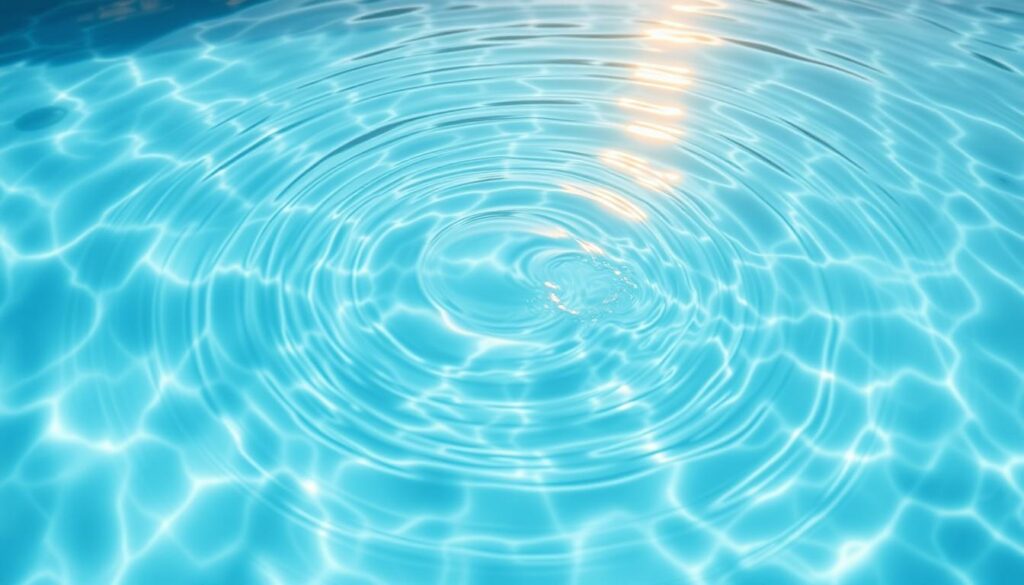
Importance of Proper Alkalinity Levels
Maintaining proper alkalinity levels in your pool is essential for optimal pool safety. Alkalinity serves as a buffer for pH levels, helping to stabilize chemical balance in the water. When alkalinity is too low, pH levels can fluctuate dramatically. This can lead to discomfort for swimmers, such as skin and eye irritation, and even contribute to cloudy water. Conversely, high alkalinity can hinder chemical efficacy, making pool maintenance more challenging.
Regular monitoring of alkalinity helps ensure water clarity, allowing you and your guests to enjoy a pristine swimming experience. Consistent testing and adjustment create a harmonious environment, minimizing the risk of long-term damage to your pool’s equipment and surfaces. Effective pool maintenance hinges on these balanced levels, reinforcing the importance of keeping your alkalinity in check.
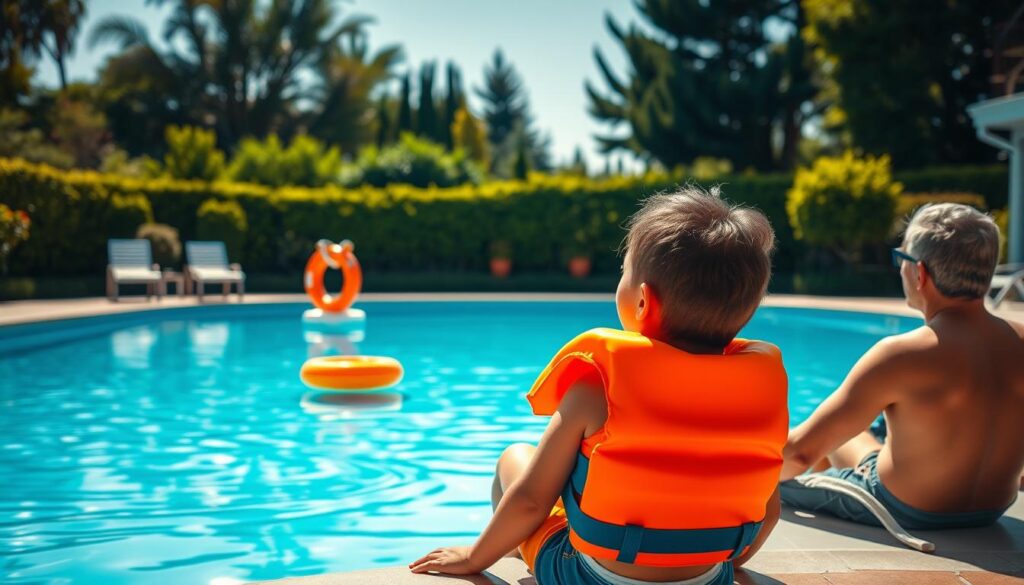
Signs Your Pool Alkalinity is Off
Keeping an eye on your pool’s alkalinity is crucial for maintaining a healthy swimming environment. Being aware of low alkalinity signs is the first step in identifying potential pool water issues. One common symptom you might notice is skin irritation during and after swimming. If your skin feels itchy or uncomfortable, it could indicate that the alkalinity levels are out of balance, affecting your overall swimming experience.
Another clear sign is cloudy or greenish water. This visual cue often results from chemical imbalances in the water chemistry. Inadequate alkalinity may prevent chlorine from functioning effectively, leading to algae growth and murky water. This not only detracts from your pool’s appearance but can also pose health risks if left unaddressed.
Difficulty stabilizing pH levels further emphasizes the importance of monitoring alkalinity. If you find yourself constantly adjusting pH without achieving the desired results, this might point to underlying alkalinity concerns. Regularly checking these signs can help you tackle issues proactively, ensuring a safe and enjoyable swimming environment.
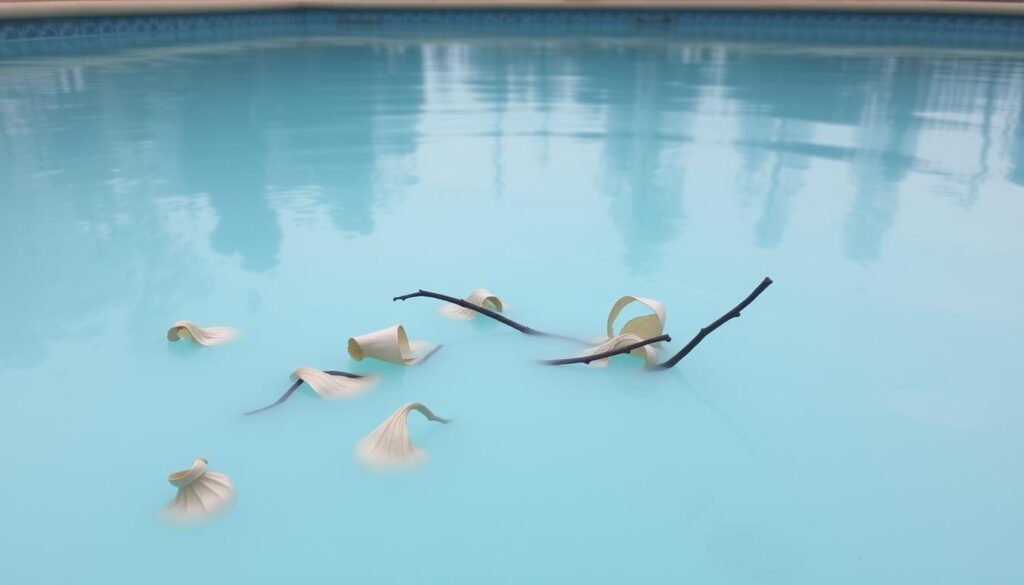
Testing Your Pool’s Alkalinity
Maintaining proper pool alkalinity involves regular testing to ensure balanced water chemistry. Accurate methods can provide you with the necessary insights to keep your pool water in optimal condition. Each testing method has its own advantages, and understanding these can help you choose the best one for your needs.
Using Test Strips
Test strips are a popular choice for quick and convenient testing pool alkalinity. These strips allow you to dip them into the pool water and compare the resulting color to a chart, providing a visual representation of your alkalinity levels. While easy to use, they may lack precision due to variations in user technique and readout interpretation.
Using Liquid Test Kits
For a more accurate assessment, consider utilizing liquid test kits. These kits include reagents that react with your pool water, allowing you to measure both pH and alkalinity more precisely. By following the instructions carefully, you can gain a thorough understanding of your water chemistry, helping you maintain a healthy swimming environment.
Digital Testing Options
Digital testers offer a modern and accurate alternative for testing pool alkalinity. Devices like the LaMotte ColorQ 2X Pro 7 not only provide precise readings but also simplify the overall testing process. Many pool owners appreciate these tools for their ease of use, making them suitable for both home and commercial pools.
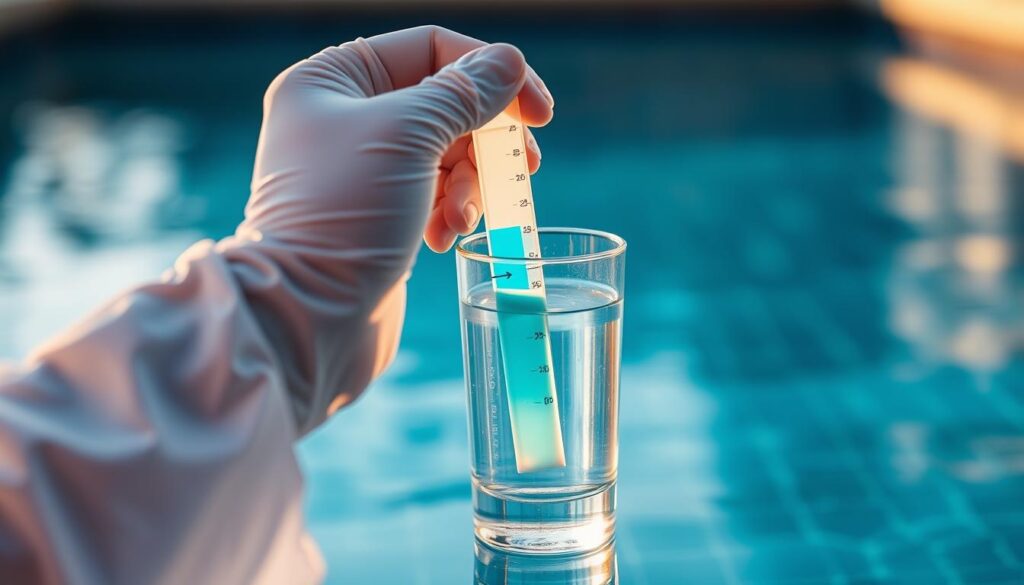
How to Adjust Pool Alkalinity
To maintain a healthy and sparkling pool, you need to adjust pool alkalinity appropriately. If your alkalinity levels fall below 80 ppm, you may want to use an alkalinity increaser, such as sodium bicarbonate, to raise them. On the other hand, if your alkalinity levels exceed 120 ppm, a muriatic acid application can help lower them safely. Follow these steps to ensure effective adjustment.
First, ensure your pool pump is running. This helps circulate the chemicals evenly throughout the water. When raising alkalinity, gradually introduce sodium bicarbonate. Follow the manufacturer’s instructions to apply the right amount based on your pool’s volume. After application, allow the pump to run for at least 30 minutes and re-test the alkalinity level.
For lowering alkalinity, carefully dilute the muriatic acid in water according to the product instructions. Using a plastic container, mix the acid and water before adding it to the pool. Pour the mixture into the pool near the return jets to help distribute it evenly. Monitor the alkalinity after a few hours, allowing the pump to run continuously during this time.
| Alkalinity Level | Action Needed | Chemical Used |
|---|---|---|
| Below 80 ppm | Increase Alkalinity | Sodium Bicarbonate (Alkalinity Increaser) |
| 80 – 120 ppm | Ideal Range | N/A |
| Above 120 ppm | Decrease Alkalinity | Muriatic Acid |
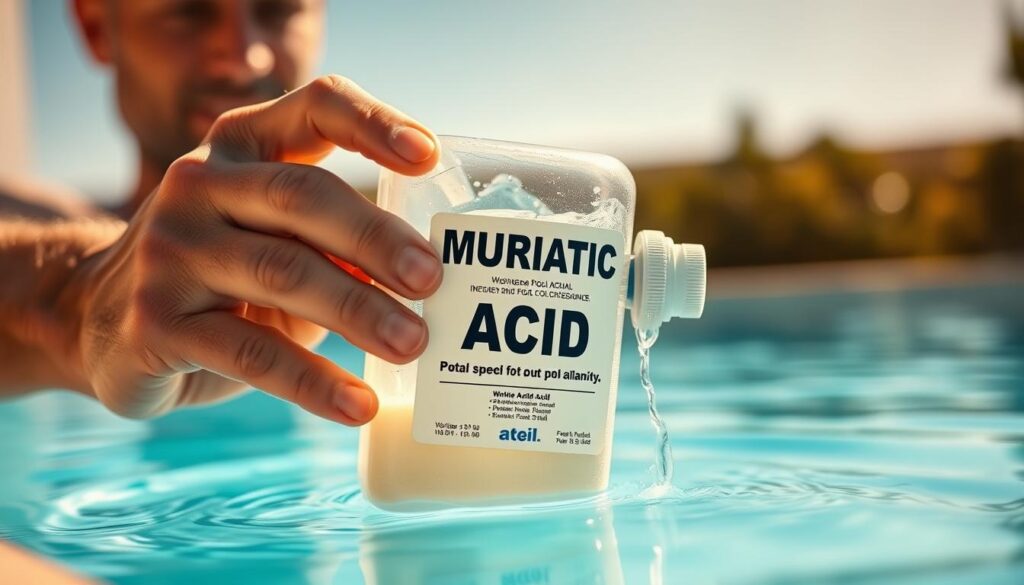
By following these steps, you can successfully adjust pool alkalinity and maintain balanced water chemistry for a refreshing swimming experience. Regular testing and adjustments allow for a safe and enjoyable pool environment.
How Much Muriatic Acid to Lower Alkalinity in Pool
Understanding the appropriate muriatic acid dosage is crucial for effective pool maintenance. The exact quantity often depends on the size of your pool and its current alkalinity levels. Generally speaking, 1 quart of muriatic acid can lower alkalinity by approximately 10 ppm in a 10,000-gallon pool. Adjusting this dosage according to your specific pool will ensure optimal results while promoting safe chemical use.
Calculating the Right Amount
To achieve the desired lower alkalinity, accurately measuring the muriatic acid dosage is necessary. Begin by testing your pool’s current alkalinity. Use a reliable method to determine how much needs to be adjusted. This will guide you in calculating the right amount of muriatic acid required.
Step-by-Step Application Process
Following a precise application process is vital for safe and effective results. Begin by wearing safety gear to protect yourself. Once prepared, measure the calculated amount of muriatic acid and dilute it in a bucket of water. Gradually add this solution to the pool while the pump is running. Regularly test the alkalinity after applying the acid to ensure you reach your desired levels.
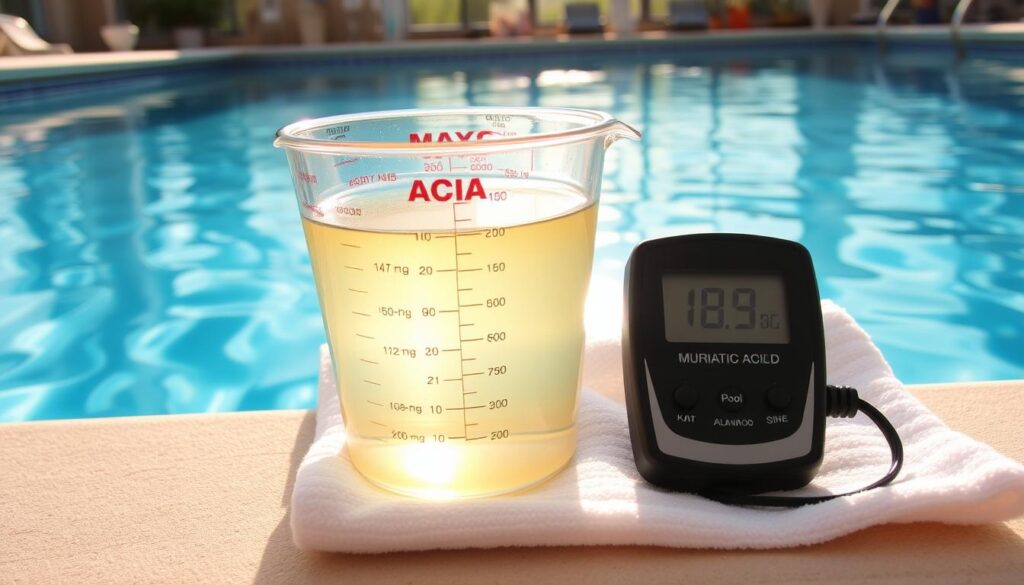
Safety Precautions When Using Muriatic Acid
Using muriatic acid can be necessary for pool maintenance, but prioritizing muriatic acid safety is essential. Start by wearing protective equipment such as gloves, goggles, and a mask. This gear significantly reduces the risk of exposure to splashes or fumes while handling chemicals.
When mixing muriatic acid, always add the acid to water, never the other way around. This practice prevents dangerous chemical reactions that could lead to splattering or excessive fumes. Before applying the acid, ensure you’re working in a well-ventilated area to minimize inhalation of harmful vapors.
Storage is equally important for maintaining safety. Store your muriatic acid in a cool, dry place out of reach of children and pets. Keeping the container tightly sealed will help avoid accidental spills and ensure safe handling of chemicals in your environment.
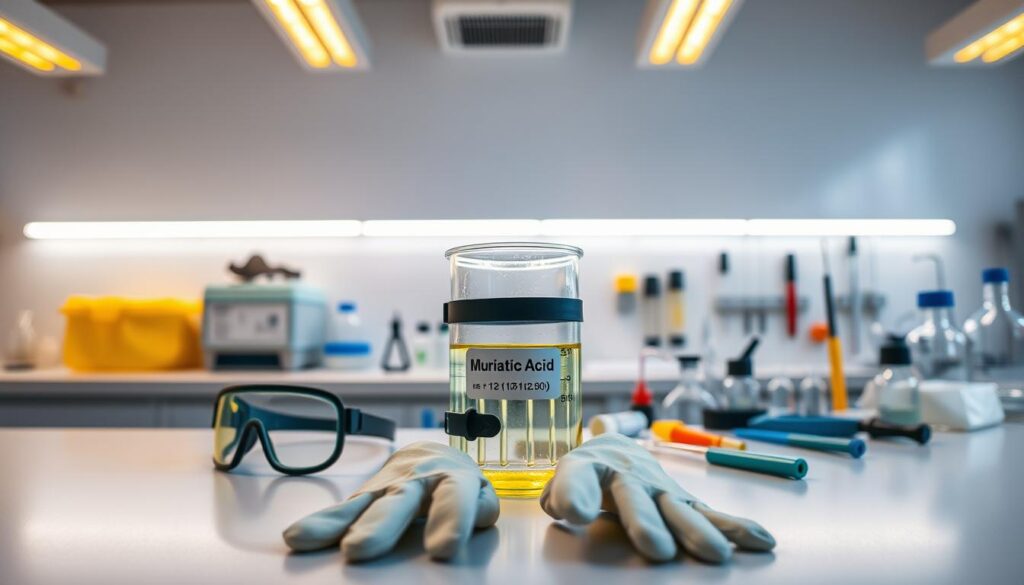
Post-Application Adjustments and Testing
After applying muriatic acid, you should allow a minimum of 4 to 6 hours before engaging in post-application testing. During this time, the acid will properly interact with the water, making it essential for accurate measurement. Once the waiting period is over, test your pool’s alkalinity to gauge any changes.
If the alkalinity remains outside of the desired range, consider making further water chemistry adjustments. This ongoing process of testing and refining your pool’s chemical balance helps maintain a safe swimming environment. Keeping a log of your results will assist in tracking these changes, enabling you to enhance your maintenance practices over time.
Regular monitoring after your adjustments not only ensures stability but also fosters a healthier pool environment. Remember, a well-balanced pool not only enhances your swimming experience but also prolongs the life of your pool equipment.

Maintaining Balanced Pool Water Chemistry
To achieve balanced water in your pool, implementing a consistent routine for regular pool maintenance is essential. This involves maintaining the right levels of alkalinity, pH, chlorine, and calcium hardness through regular testing. Adhering to a reliable testing schedule keeps your pool water safe and enjoyable for swimming.
A good practice is to test your pool’s water chemistry at least once a week. This allows you to catch any inconsistencies early before they escalate into larger issues. If you notice fluctuations, make the necessary adjustments incrementally. This approach allows the water chemistry to stabilize gradually, preventing sudden shifts that could affect your swimming experience.
Additionally, remember to adjust your water chemistry each time before using the pool. This small yet significant step ensures that you and your family do not face any discomfort during swim sessions. Regularly maintaining the balance of chemicals helps you enjoy clean, clear, and safe water all season long.
| Water Parameter | Ideal Range | Testing Frequency |
|---|---|---|
| Alkalinity | 80-120 ppm | Weekly |
| pH Level | 7.2-7.8 | Weekly |
| Chlorine | 1-3 ppm | Weekly |
| Calcium Hardness | 200-400 ppm | Monthly |
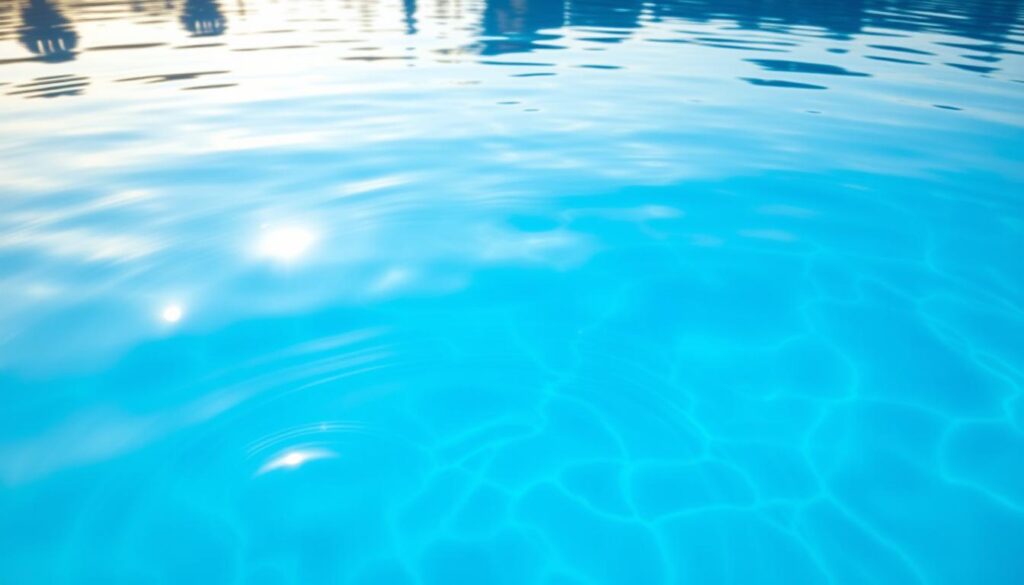
Conclusion
Incorporating muriatic acid into your pool maintenance routine is essential for achieving and maintaining balanced alkalinity levels. Understanding the benefits of muriatic acid allows you to tackle common issues effectively, promoting a healthy swimming environment. Regular testing, paired with proper application, ensures your pool remains a safe swimming oasis for you and your loved ones.
Implementing these pool maintenance tips can help you create a clear and inviting space, while also enhancing the longevity of your pool. Maintaining balanced chemistry is crucial in preventing unnecessary wear on pool equipment and surfaces, allowing you to enjoy your pool throughout the season with confidence.
By regularly monitoring your pool’s alkalinity and adjusting when necessary, you are taking proactive steps towards ensuring a safe and enjoyable swimming experience. Remember, a well-maintained pool not only looks appealing but also contributes to the overall well-being of everyone who dives in!
